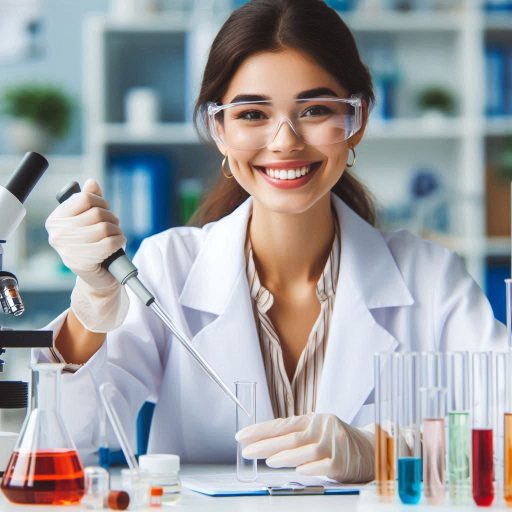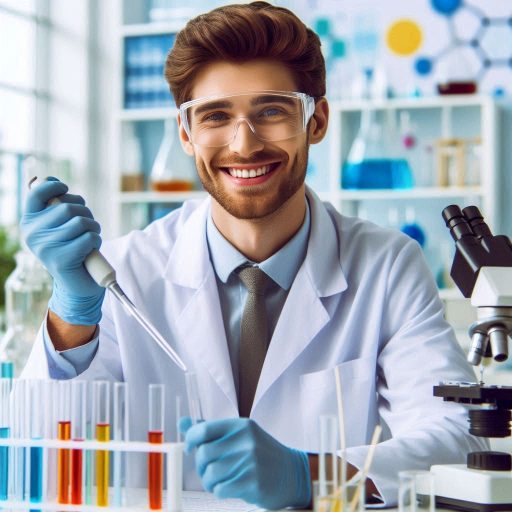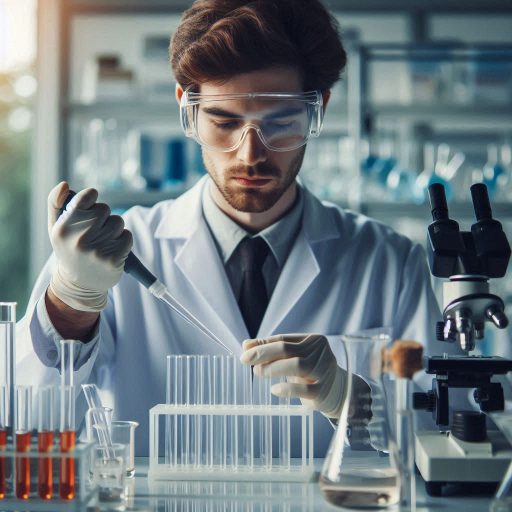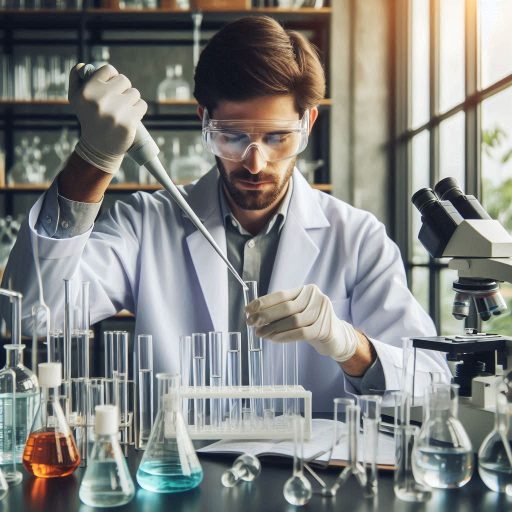Introduction
Lab technicians play a crucial role in various industries, including healthcare, pharmaceuticals, environmental science, and food safety.
They are responsible for conducting experiments, analyzing data, and ensuring the accuracy of lab results.
Their work is essential for the development of new products, the diagnosis of diseases, and the protection of public health.
The accuracy and efficiency of a lab technician‘s work heavily depend on the tools and equipment they use.
Without the right tools, even the most skilled technician would struggle to perform their duties effectively.
Brief Overview of the Role of Lab Technicians in Various Industries
Lab technicians work across a range of industries, each requiring specialized skills and knowledge.
In healthcare, lab technicians analyze blood samples, tissue, and other bodily fluids to assist in diagnosing diseases.
In the pharmaceutical industry, they support the development of new drugs by conducting experiments and analyzing chemical compounds.
Environmental lab technicians monitor pollution levels and ensure compliance with environmental regulations.
Food safety technicians test food products for contaminants to protect public health.
Regardless of the industry, lab technicians must adhere to strict protocols and use precise tools to ensure accurate results.
Their role is vital in ensuring the safety and quality of products and services that impact society.
Importance of Having the Right Tools and Equipment for Lab Technicians
The effectiveness of a lab technician is largely determined by the tools and equipment at their disposal.
Precision instruments, such as pipettes, microscopes, and centrifuges, are essential for conducting accurate experiments and obtaining reliable data.
For instance, a high-quality microscope is necessary for observing microorganisms, while a properly calibrated pipette ensures accurate measurement of liquids.
Additionally, safety equipment like gloves, goggles, and fume hoods are crucial for protecting technicians from hazardous substances.
Investing in the right tools and equipment not only enhances the efficiency of lab operations but also ensures the safety and well-being of the technicians.
Inaccurate tools can lead to faulty results, which could have serious consequences, especially in fields like healthcare and environmental science.
Therefore, it is imperative for laboratories to regularly update and maintain their equipment to meet industry standards.
Proper training on the use of these tools is equally important to maximize their effectiveness.
Essentially, having the right tools and equipment is fundamental to the success and safety of lab technicians, enabling them to perform their duties with precision and confidence.
Microscopes
Microscopes are indispensable tools in any laboratory setting.
They provide a window into the microscopic world, allowing lab technicians to observe and analyze samples with precision.
Without high-quality microscopes, accurate results would be nearly impossible to achieve.
Understanding the different types of microscopes available and their maintenance is essential for any lab technician.
Types of Microscopes Used in Laboratory Settings
Several types of microscopes are commonly used in laboratories, each with specific functions.
Light microscopes are the most basic and widely used, enabling technicians to view live cells and organisms.
They are ideal for routine observations and simple analyses.
Fluorescence microscopes take it a step further, allowing the visualization of fluorescently labeled specimens, which is crucial for studying cellular structures and processes.
Electron microscopes, including transmission and scanning types, provide incredibly high magnification and resolution, revealing the detailed structures of cells and tissues.
These are essential for research that requires ultra-fine detail.
Each type of microscope serves a unique purpose in the laboratory, making them vital tools for different kinds of analysis.
Importance of Having High-Quality Microscopes for Accurate Results
High-quality microscopes are not just a luxury; they are a necessity in any lab.
The accuracy of results directly correlates with the quality of the microscope used.
A high-quality microscope offers clear, sharp images, reducing the likelihood of errors in observation and analysis.
This clarity is crucial when identifying minute details in samples, such as cell structures or microorganisms.
Poor-quality microscopes can lead to misinterpretation of data, which can have serious implications in research, diagnostics, and other scientific applications.
Investing in top-tier microscopes ensures that lab technicians can perform their work with confidence, knowing that their tools are reliable and precise.
Maintenance Tips for Microscopes to Prolong Their Lifespan
Proper maintenance of microscopes is key to ensuring their longevity and performance.
Regular cleaning of lenses and optical components is essential to avoid the buildup of dust and debris, which can obscure the view and affect the accuracy of observations.
Using lens paper or a soft brush to gently clean the lenses is recommended to prevent scratches.
It is also important to cover microscopes with a dust cover when not in use to protect them from environmental contaminants.
Additionally, checking and adjusting the alignment of the lenses and light source periodically can help maintain optimal performance.
Proper storage, away from extreme temperatures and humidity, will also extend the lifespan of these delicate instruments.
By following these maintenance tips, lab technicians can ensure that their microscopes remain in excellent working condition for years to come.
In summary, microscopes are critical tools in the laboratory, and understanding their types, importance, and maintenance is essential for every lab technician.
Read: Safety Tips for Field Surveying Technicians
Pipettes
Pipettes are fundamental tools in any laboratory, providing precise liquid handling essential for accurate experiments.
Proper knowledge of pipette types and their correct usage is crucial for maintaining the integrity of laboratory work.
Different Types of Pipettes and Their Uses
Pipettes come in various types, each designed for specific tasks in the lab.
The most common include single-channel pipettes, multi-channel pipettes, and electronic pipettes.
Single-channel pipettes are versatile, ideal for transferring small liquid volumes in clinical, chemical, and biological settings.
Multi-channel pipettes are indispensable in high-throughput environments, such as when handling multiple samples simultaneously in a 96-well plate.
Electronic pipettes offer advanced features like adjustable volumes and automated dispensing, enhancing efficiency and reducing manual effort.
Each type of pipette serves a distinct purpose, making it essential to select the right one for the task at hand to ensure accurate results.
How to Properly Maintain and Calibrate Pipettes
Maintaining and calibrating pipettes is vital to ensure their accuracy and longevity.
Regular cleaning prevents contamination and buildup of residues that can affect performance.
To clean a pipette, disassemble it according to the manufacturer‘s instructions, then clean the parts with a mild detergent or appropriate solvent.
Calibration should be performed regularly to ensure the pipette dispenses the correct volume.
This involves comparing the pipette‘s measurements with a standard reference and adjusting as necessary.
Consistent calibration is especially critical in laboratories where precision is paramount, as even slight deviations can lead to significant errors in experimental outcomes.
Proper maintenance and calibration practices extend the life of the pipette and maintain the accuracy essential for reliable laboratory work.
Importance of Accurate Measurements in Laboratory Work
Accurate measurements are the backbone of reliable laboratory results, making pipette precision indispensable.
Inaccurate measurements can lead to flawed experiments, invalidating results and potentially causing significant setbacks in research.
For example, in pharmaceutical labs, incorrect dosages during drug formulation can result in ineffective or dangerous products.
In clinical settings, precise measurements are crucial for diagnosing and treating patients accurately.
The accuracy of pipettes directly influences the quality of data generated in experiments, underscoring the importance of regular maintenance, calibration, and proper use.
By ensuring pipettes are functioning correctly, laboratory technicians contribute to the overall success and reliability of scientific research and clinical diagnostics.
Pipettes are more than just tools; they are critical instruments that uphold the accuracy and reliability of laboratory work.
Understanding the different types of pipettes and their specific uses, maintaining and calibrating them properly.
Recognizing the importance of accurate measurements are all essential for achieving reliable and reproducible results in any laboratory setting.
Proper pipette management is key to ensuring successful outcomes in both research and clinical applications.
Read: Recent Trends in Surveying and Mapping Technologies
Centrifuges
Centrifuges play a crucial role in separating substances in a lab environment.
They are vital tools that help in various scientific and medical procedures.
Role of centrifuges in separating substances in a lab
- Centrifuges work based on the principle of centrifugal force, which allows for the separation of substances based on their density.
- These devices spin samples at high speeds, causing heavier particles to move outward and lighter particles to move inward.
- By separating substances in this manner, centrifuges help in isolating components such as cells, proteins, and nucleic acids for further analysis.
Types of centrifuges and their specific applications
- There are various types of centrifuges, including microcentrifuges, refrigerated centrifuges, and ultracentrifuges, each designed for specific applications.
- Microcentrifuges are commonly used for small sample volumes, while refrigerated centrifuges are ideal for temperature-sensitive samples.
- Ultracentrifuges, on the other hand, are capable of higher speeds and are used in advanced research applications such as molecular biology and biochemistry.
Safety precautions when using centrifuges
- Always ensure that the centrifuge is properly balanced before starting the run to avoid any accidents or damage to the equipment.
- Use appropriate tubes and containers that can withstand the high speeds and forces exerted during centrifugation.
- Follow manufacturer guidelines for loading samples, setting speed and time parameters, and wearing appropriate personal protective equipment.
- Never attempt to open the centrifuge lid while it is in operation, as this can lead to serious injury from the high speeds involved.
Read: Networking Tips for Surveying and Mapping Professionals
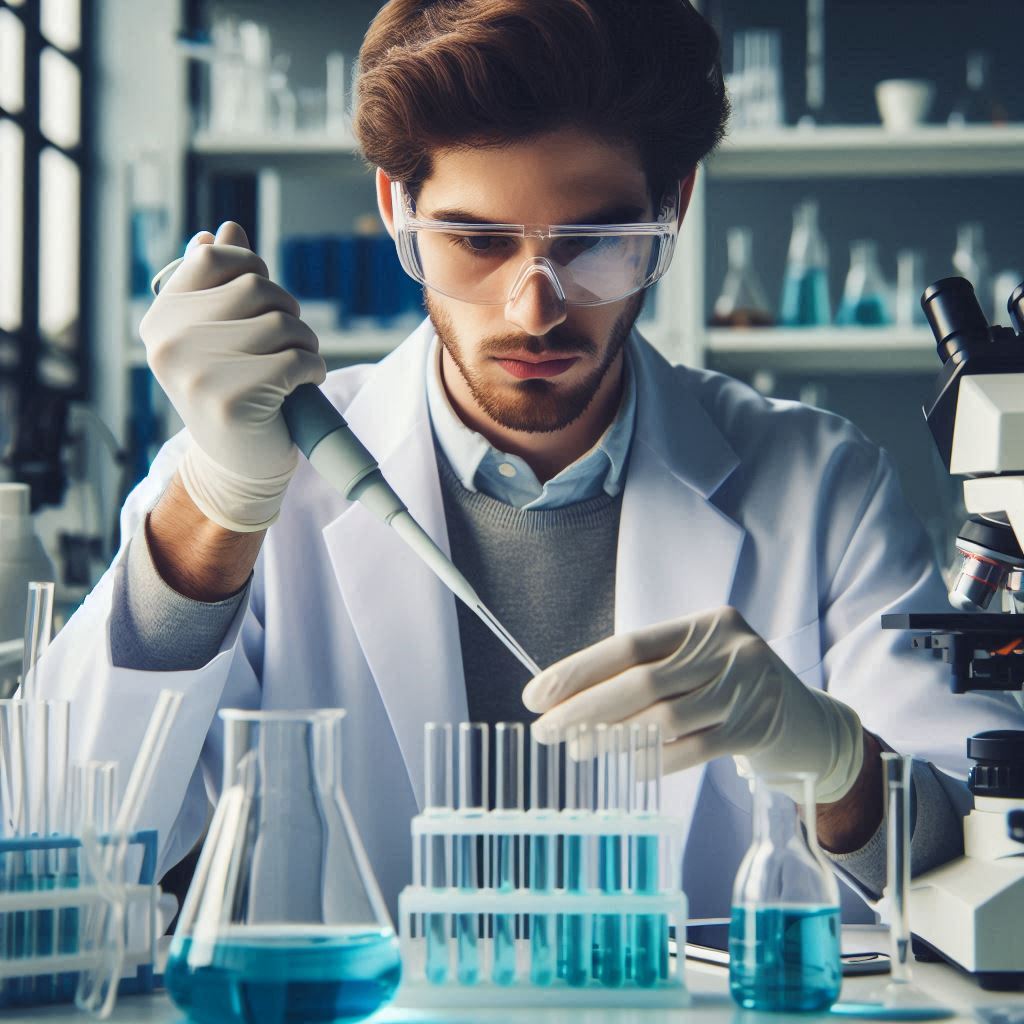
Beakers and Flasks
Various Sizes and Shapes of Beakers and Flasks
Beakers and flasks come in various sizes and shapes, each serving a unique purpose in the lab.
Beakers are usually cylindrical with a flat bottom and a spout for easy pouring.
They are ideal for mixing, heating, and holding liquids.
Flasks, on the other hand, include types like Erlenmeyer and volumetric flasks.
Erlenmeyer flasks have a narrow neck and are used for swirling and mixing without risk of spills.
Volumetric flasks are designed for precise measurements and have a narrow neck to ensure accuracy.
Using the correct type and size of glassware is crucial for accurate results and efficient workflows.
Importance of Using the Right Type of Glassware for Specific Experiments
Choosing the right glassware for your experiments is essential to obtain accurate and reliable results.
Each type of beaker and flask is designed for specific functions.
For example, Erlenmeyer flasks are perfect for reactions that require swirling, while volumetric flasks are best for precise dilutions.
Using improper glassware can lead to errors in measurements or contamination of samples.
Selecting the correct glassware also helps in maintaining the integrity of your experiment and preventing cross-contamination.
Therefore, understanding the purpose of each type of glassware is vital for successful laboratory work.
Proper Cleaning and Sterilization Methods for Beakers and Flasks
Proper cleaning and sterilization of beakers and flasks are crucial to avoid contamination.
Begin by rinsing the glassware with water immediately after use to prevent residue from drying.
Use laboratory detergents and brushes to thoroughly clean the glassware, ensuring no traces of chemicals or particles remain.
After cleaning, rinse with distilled water to remove any detergent residues.
Sterilization can be achieved through autoclaving, which uses high-pressure steam to eliminate microorganisms.
For heat-sensitive glassware, consider using chemical disinfectants or UV sterilizers.
Proper maintenance of glassware ensures the accuracy and safety of your experiments.
Most importantly, understanding the different types of beakers and flasks, using the right glassware for specific experiments, and maintaining proper cleaning and sterilization practices are essential for any lab technician.
By adhering to these guidelines, you ensure the accuracy and reliability of your laboratory work.
Read: Field vs. Office Work in Surveying and Mapping
Transform Your Career Today
Unlock a personalized career strategy that drives real results. Get tailored advice and a roadmap designed just for you.
Start NowLaboratory balances
When it comes to essential lab technician tools and equipment, laboratory balances play a crucial role in ensuring accuracy and precision in weighing substances.
Let’s delve into the different types of balances used in labs, the importance of accurate weighing in laboratory work, and the calibration and maintenance of laboratory balances.
Different Types of Balances Used in Labs
Laboratory balances come in various types, each designed for specific weighing needs. Here are some common types:
- Top-loading balances: Ideal for general lab use and can weigh larger quantities with decent accuracy.
- Analytical balances: More precise than top-loading balances, used for measuring small quantities with high accuracy.
- Precision balances: Provide a balance between the capacity of top-loading balances and the precision of analytical balances.
- Microbalances: Designed for weighing extremely small masses, often used in pharmaceutical and research labs.
Importance of Accurate Weighing in Laboratory Work
Accurate weighing is paramount in laboratory work as it impacts the validity and reliability of experimental results. Here’s why precise weighing is essential:
- Ensures correct measurement of substances, leading to accurate formulation of solutions.
- Guarantees reproducibility of experiments, allowing for consistent results.
- Prevents errors in calculations that could compromise the integrity of the research.
- Helps in maintaining quality control standards in various industries and research settings.
Calibration and Maintenance of Laboratory Balances
Proper calibration and maintenance of laboratory balances are crucial to ensure their accuracy and longevity.
Here are some important steps to follow:
- Regular calibration: Balances should be calibrated at regular intervals using certified weights to ensure accurate measurements.
- External calibration: External calibration services can be utilized for more precise calibration results.
- Proper handling: Balances should be handled with care to avoid damage to sensitive internal components.
- Cleaning: Regular cleaning of balances with appropriate methods and materials is necessary to maintain accuracy.
- Preventive maintenance: Regular servicing and inspection can help identify and address issues before they affect performance.
In essence, laboratory balances are essential tools for lab technicians, and their proper use, calibration, and maintenance are crucial for accurate and reliable results in scientific experiments.
Understanding the different types of balances, the importance of accurate weighing, and following proper calibration and maintenance procedures can ensure the effectiveness and efficiency of laboratory work.
Safety equipment
Personal Protective Equipment (PPE) Required for Lab Technicians
Lab technicians work with hazardous materials, so personal protective equipment (PPE) is crucial.
Common PPE includes lab coats, gloves, and safety goggles.
Lab coats protect against spills and splashes, while gloves prevent direct contact with chemicals.
Safety goggles shield the eyes from potentially harmful substances.
Face shields may also be used for additional protection.
The choice of PPE depends on the specific risks associated with the tasks performed.
For example, technicians handling corrosive substances should use heavy-duty gloves and splash-proof goggles.
Proper use of PPE is essential to minimize exposure to dangerous materials and ensure safety.
Emergency Eyewash Stations and Fire Extinguishers in Labs
Emergency eyewash stations and fire extinguishers are vital for lab safety.
Eyewash stations provide immediate relief in case of chemical splashes to the eyes.
They should be easily accessible and regularly tested to ensure functionality.
Fire extinguishers are equally important, as they help control small fires before they escalate.
Labs should have extinguishers suitable for different types of fires, such as chemical fires.
Technicians must know the locations of these safety devices and how to use them effectively.
Regular maintenance and accessibility of eyewash stations and fire extinguishers are critical to ensuring preparedness in emergencies.
Importance of Following Safety Protocols to Prevent Accidents
Adhering to safety protocols is crucial for preventing lab accidents.
These protocols include proper handling and storage of chemicals, maintaining clean work areas, and following emergency procedures.
Technicians should always read and understand safety data sheets (SDS) for chemicals they use.
Regular safety training helps keep technicians informed about the latest safety practices and emergency procedures.
Labs should have clear signage to remind technicians of safety rules and the locations of emergency equipment.
By following these protocols, technicians can significantly reduce the risk of accidents and ensure a safer working environment for everyone.
Gain More Insights: Remote Work Opportunities for Computer Engineers
Incubators and Ovens
Role of Incubators and Ovens in Maintaining Controlled Temperatures
Incubators and ovens are essential tools in laboratory settings, playing a crucial role in maintaining controlled temperatures.
These devices ensure that specific environmental conditions are met, which is vital for the successful cultivation of microorganisms, cell cultures, and chemical reactions.
Maintaining consistent temperatures is crucial for accurate and reliable experimental outcomes.
For instance, in microbiology labs, incubators provide the ideal conditions for bacteria and fungi to grow, while ovens ensure the proper drying and sterilization of equipment and samples.
By maintaining controlled temperatures, these devices contribute to the overall precision and success of various laboratory processes.
Types of Incubators and Ovens Used in Labs
Different types of incubators and ovens are used in labs, each serving specific purposes.
Standard incubators are commonly used for cell culture, microbiology, and other applications requiring a stable temperature environment.
CO2 incubators are designed for cell cultures that need a controlled CO2 atmosphere, ensuring the proper pH levels in cell culture media.
Refrigerated incubators, on the other hand, are used for experiments requiring temperatures below ambient levels.
When it comes to ovens, drying ovens are used for removing moisture from samples, while vacuum ovens are ideal for delicate drying processes that require low temperatures.
Each type of incubator and oven serves a unique purpose, making them indispensable in various laboratory settings.
Regular Maintenance and Calibration of Incubators and Ovens
Regular maintenance and calibration of incubators and ovens are essential for ensuring their accuracy and longevity.
Proper maintenance involves routine cleaning to prevent contamination and the build-up of harmful substances.
This not only extends the lifespan of the equipment but also ensures that experimental results are not compromised by unexpected variables.
Calibration, on the other hand, ensures that the devices operate within the specified temperature ranges.
Regular calibration checks are vital for maintaining the accuracy of temperature settings, as even minor deviations can significantly impact the outcomes of experiments.
By adhering to a regular maintenance and calibration schedule, labs can ensure that their incubators and ovens function optimally, providing consistent and reliable results.
pH Meters and Other Testing Equipment
In laboratory settings, precise measurements are crucial. pH meters and other testing equipment play an essential role in ensuring accuracy in various experiments.
Understanding how these tools work and their importance is vital for lab technicians.
Importance of Monitoring pH Levels in Various Experiments
Monitoring pH levels is critical in many experiments because it directly impacts chemical reactions.
The pH level determines the acidity or alkalinity of a solution, influencing the behavior of molecules.
In biochemical experiments, for example, enzymes require specific pH levels to function properly.
If the pH deviates from the optimal range, the experiment‘s outcome may be compromised.
Lab technicians must consistently monitor pH levels to maintain the integrity of their work, ensuring that results are reliable and reproducible.
Failure to do so can lead to inaccurate data, which could misguide further research or practical applications.
How pH Meters Work and Their Calibration
pH meters are precision instruments used to measure the hydrogen ion concentration in a solution, which indicates its pH level.
These devices consist of a probe, usually made of glass, and an electronic meter that displays the pH value.
The probe is sensitive to hydrogen ions and generates a small voltage that the meter translates into a pH reading.
For accurate measurements, it is crucial to calibrate the pH meter regularly.
Calibration involves using standard buffer solutions with known pH values, usually at pH 4, 7, and 10.
By immersing the probe in these solutions and adjusting the meter, technicians ensure that the pH meter provides accurate readings.
Regular calibration is essential because the probe‘s sensitivity can drift over time due to wear or contamination.
Other Testing Equipment Used in Labs for Specific Measurements
Apart from pH meters, labs utilize a variety of other testing equipment to perform specific measurements.
Spectrophotometers, for instance, measure the absorbance of light by a sample, providing data on concentration levels of substances within that sample.
This is crucial in fields like biochemistry and molecular biology.
Balances and scales are used to measure mass with high precision, ensuring that reagents are used in accurate quantities.
Centrifuges separate mixtures based on density, which is particularly important in clinical labs for blood testing.
Each piece of equipment serves a unique purpose, contributing to the accuracy and success of laboratory experiments.
Lab technicians must be proficient in using these tools and understanding their principles to maintain high standards in their work.
Generally, the proper use and understanding of pH meters and other testing equipment are fundamental for lab technicians.
These tools ensure the accuracy and reliability of experimental results, making them indispensable in any laboratory setting.
Discover More: Understanding the Cybersecurity Analyst Job Description
Conclusion
Recap of the Essential Tools and Equipment for Lab Technicians
Lab technicians rely on a wide array of tools and equipment to perform their duties effectively.
Microscopes, one of the most fundamental tools, allow technicians to observe microorganisms and cell structures in detail.
Centrifuges play a crucial role in separating substances of different densities, which is essential for many tests and analyses.
Pipettes, available in various sizes, ensure accurate measurement and transfer of liquids, while autoclaves sterilize equipment and materials, maintaining a contaminant-free environment.
Balances, both analytical and precision types, provide accurate weight measurements, a critical factor in chemical preparations.
Spectrophotometers are indispensable for measuring the intensity of light and analyzing substances, contributing to the understanding of chemical properties.
In addition to these primary tools, safety equipment such as gloves, lab coats, and fume hoods are vital in protecting technicians from potential hazards.
Proper use of glassware, including beakers, flasks, and test tubes, is also necessary for conducting experiments and mixing solutions.
Each tool and piece of equipment has a specific role in the laboratory, ensuring that technicians can perform their tasks with precision and efficiency.
Importance of Maintaining and Calibrating Tools for Accurate Results and Safety in the Lab
Maintaining and calibrating laboratory tools and equipment is essential for achieving accurate results and ensuring safety.
Regular maintenance helps prevent equipment malfunctions that could lead to inaccurate data or even hazardous situations.
Calibration, the process of adjusting equipment to meet defined standards, is crucial for ensuring measurements are precise and reliable.
For example, a poorly calibrated balance can result in incorrect weight measurements, compromising the outcome of an experiment.
Similarly, uncalibrated spectrophotometers might provide inaccurate readings, leading to faulty conclusions.
Safety in the laboratory depends not only on the proper use of equipment but also on its regular maintenance.
Autoclaves, if not maintained, may fail to sterilize instruments effectively, increasing the risk of contamination.
Similarly, centrifuges require regular inspection to avoid mechanical failures that could lead to accidents.

